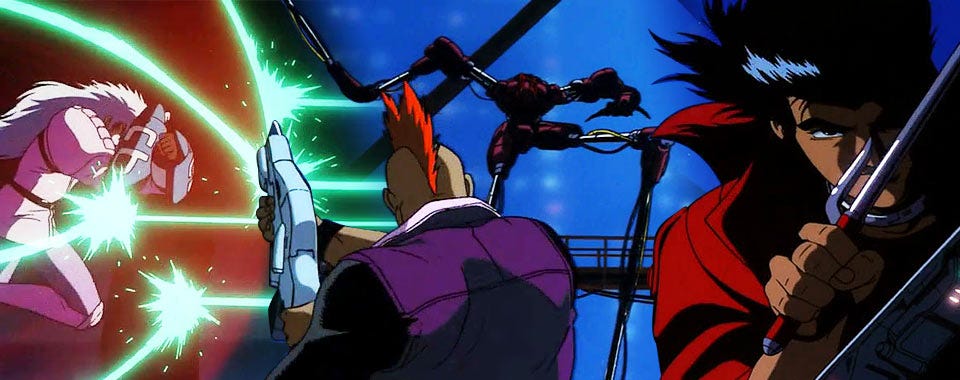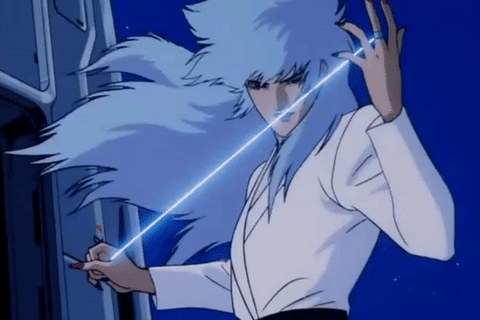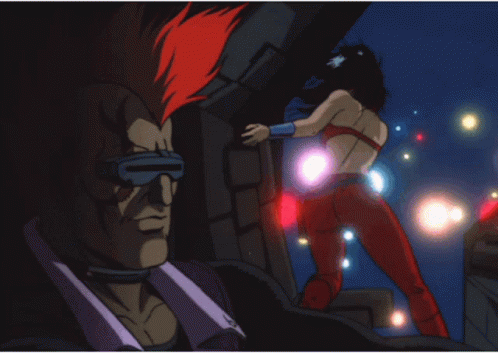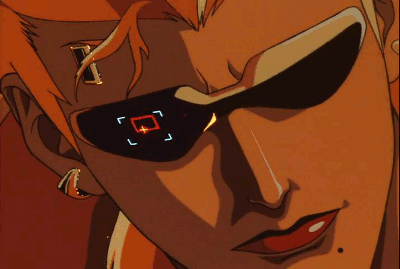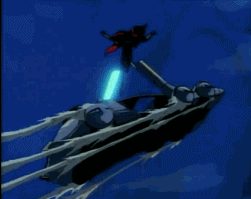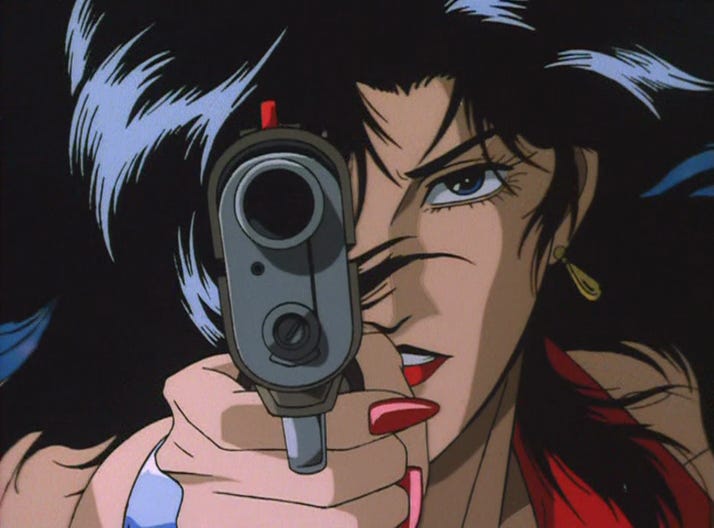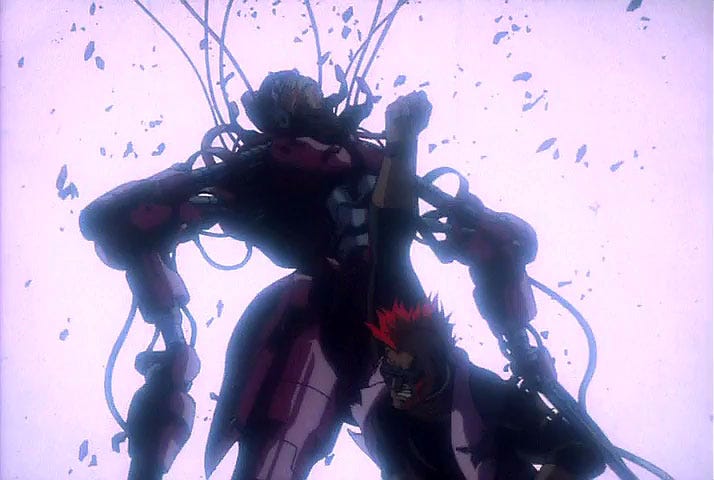🎬 #61 The Amazing Energy Of Anime.
I have such a vivid memory of the first time I saw the series that I’ll talk about in this edition of the newsletter. Not technically a film but each of the three 45 minute episodes can be enjoyed together as such. I saw it maybe when I was 10 years old and I thought it was one of the coolest things I’d ever seen. I was introduced to it by my older cousin Paul and it felt like one of those things that I shouldn’t be seeing and that leant it an alluring power all its own. I immediately wanted to see it again and again and all these years later I’ll rewatch it at least once a year. All to experience that special energy that Anime has. Only possible because every frame of it is designed and conceived in a way almost impossible to replicate in a live action film - especially this 90’s ultra-violent, ultra-stylised series.
The UK released edition of the three part series - shown late night on Channel 4 and video taped by my cousin, has a totally different score to both the original Japanese version and the US version. It might the ‘coolest’ score and certainly one of my favourites of anything I’ve seen since. It was composed by Rory McFarlane and is a bit of a collector’s item because it’s so rare on CD or Vinyl. This remains one of my fondest ‘film’ memories - and introduced me to exactly what was possible with storytelling all through what I first saw as a crazy violent and dark cartoon - and it blew my mind.
Happy viewing
Bry
CYBER CITY OEDO 808
1990-1991 Dir Yoshiaki Kawajiri | Series creator Jûzô Mutsuki
The series set hundred of years into the future follows three jailed criminals who, in exchange for working with the OEDO police force, get reduced sentences for every high level ‘cyber criminal’ they arrest or kill. To ensure they comply, they have explosive collars fitted to their necks with a timer to give each story a very primal ticking clock. Each episode focuses on one of the three central characters - Benten, Sengoku and Gogul.
I’ve chosen to include gifs in this edition to try to capture the energy I’m talking about. This is the kind of energy that traditional film can’t come close to in a conventional sense. As I mentioned it’s because every frame is designed and animated exactly the way the director wants - including the performances. That lends every single second a stylised quality that is very much this period of Manga. They’re not trying to do reality, they’re trying to tell the story their own way.
In the gif above, you’ll notice even the light is under the animator’s control - an obvious thing to say but key to understanding why this series has such a unique quality. The ‘ring’ flare imitates a flare that might happen if a real camera was there but it also does the impossible - perfect overlapping circles - everything is styled to perfection even it wouldn’t be replicable / how real world photography works.
Notice in the above gif too how shot 4, shows the road speeding towards us while the bridge ahead rises above - again something that would be impossible to capture with a real camera, lenses can't replicate this kind of behaviour, the road and the bridge in the far distance can’t be in focus at the same time. It gives this scene a pace and edge that propels the action forward. These are also amazing animation techniques that would save the creators time, they can keep the moving elements limited - this restriction lends it a very special quality - like the fact some of the characters remain perfectly still, like Sengoku in shot 3 of the above gif. He’s perfectly posed, frozen in position, focused, determined - something a real life actor couldn't achieve because, well, they’re alive ad breathing. The same is true of the character, Benten, in the below gif. The motion elements are minimal - they give the pose and character a sense of power and cool - because they’re motionless except the hair and clothes. They're fixed in time - the perfect angle, the perfect action, the perfect framing.
Same for the characters Gokul and Sarah below.
These aren’t just the effects of a gif, this is how big portions of the scenes play out. This scene above is also key because it embodies two elements that come together in this series that make it so unique for me - the brutal violence but also the romanticism of a tech noir future setting all gelled together by McFarlane’s ambient, electronic, metal score. You can see these elements in the scene with Sengoku’s car [the first gif], and the cherry blossom leaf flitting by the lens while the ultra metropolis of future Tokyo is seen behind. The contrast of the hard and soft, the tenderness and the metal, the cold and the warmth all mash together into a tone that I love about the series.
In the scene above, Sarah, while trying to take aim at a special force’s aircraft, suddenly reminisces about past times with Gokul. As she does the action dips away, almost into a dreamlike quality, a frozen living moment and McFarlane’s heavy electric guitars continue to spill over her recollections of a time gone by, all while the scene almost moves in static slow motion. This is something you just wouldn't see in a live action film - pounding metal guitars over a tender moment. But it all works brilliantly for me.
The action is almost broken down into literally motion pictures. Static images moved over each other on layers to create dynamic action - Sengoku here flies motionless towards camera, while his car speeds through the air perpendicular to him. Again, I love the touches of the streaks of tire smoke, peeling off the wheels. The creators never giving up an opportunity to add action or visual interest into the image. The blocking, choreography, framing, at almost every turn would be impossible to achieve in a live action film - because you have random chance, the effect of real wind machines, the expression of the actor’s faces, the effect of trying to photograph a real world location, the thousands of ways the light would actually move across someone’s glasses. To get anything close, you’d have to augment it all so heavily with CGI you might as well animate it. I think this would be an amazing experiment - to try to achieve this style in live action.
This approach gives the whole series a propulsive, expressionistic quality. Flashing lights explode behind a character as they uppercut a man/machine hybrid with psychic powers, debris seems to float mid-air while an evil soldier dies in slow motion, a woman’s hair billows rhythmically, as if alive, while she levitates behind a cracking window. The animation choices set us in this hard edged future world, expressing the environment and the inner feelings of the characters in such a balls to the wall way you can’t help but love it. It’s emotion wrought into being with ink and fake light.
All of this is helped in no small part by the excellent score - it drives the whole series, never really letting up and I can’t imagine this very particular vision without the music. I’ve never even attempted to watch it with the original score. I urge you to have a watch and get transported into a punk rock future Tokyo inhabited by characters as tough as the grey gilded city itself.
TL;DR why should I spend approx 2 hrs of my precious life watching this? Get amped up by this future vision of anti-hero crimefighters in a tech noir, heavy metal soaked mash up of action, violence and romanticism.
*Available for free on YouTube - thank you Real Zloebun whoever you are!
Episode One
Episode Two
Episode Three
Fact: The score you’ll hear is still not available on Western DVD releases because of ownership issues. It’s only to be found on the original VHS release in the UK which is what you’ll see in the links above.

